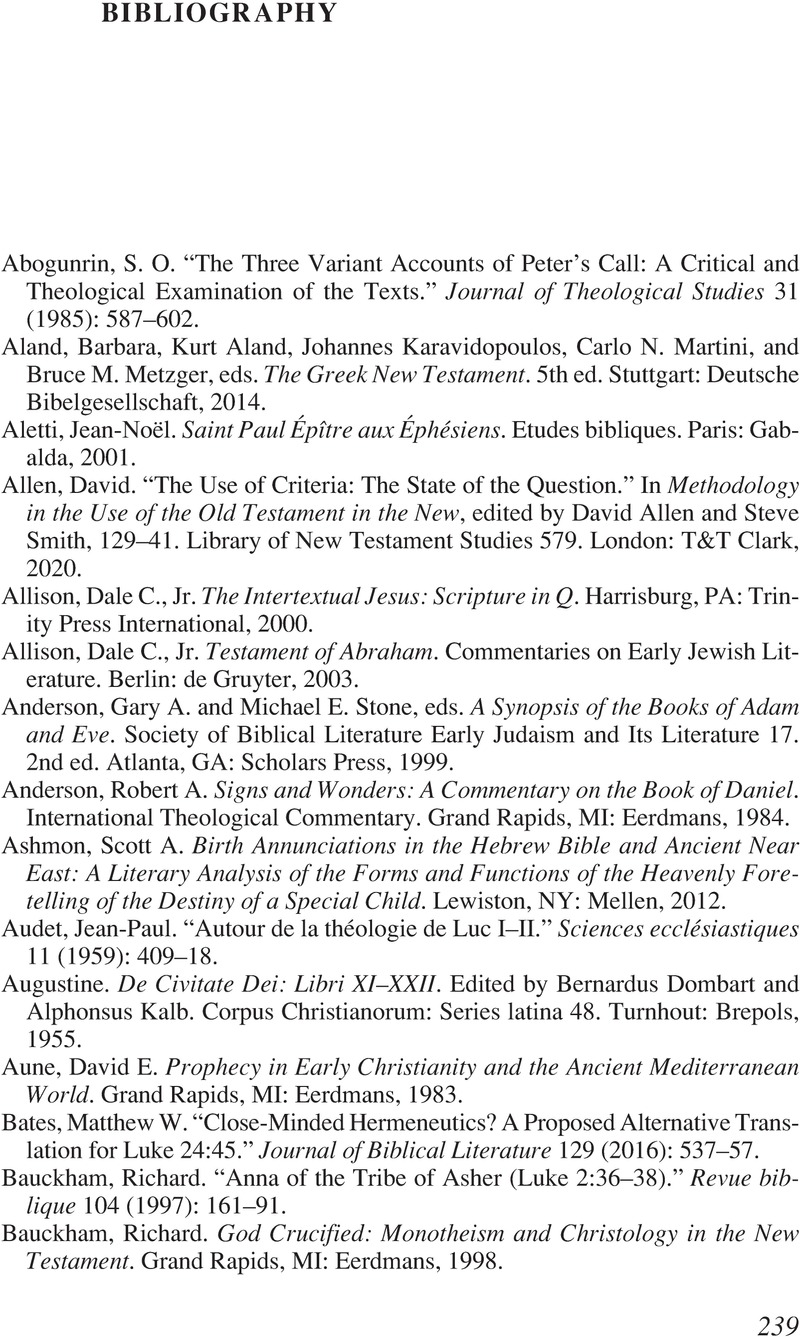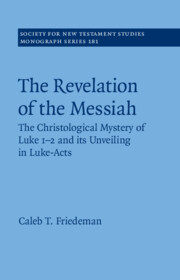Book contents
- The Revelation of the Messiah
- Society for New Testament Studies
- The Revelation of the Messiah
- Copyright page
- Dedication
- Contents
- Acknowledgments
- Author’s Note
- Abbreviations
- 1 Introduction
- 2 The Revelatory Character of Luke 1–2
- 3 The Mystery of Luke 1–2
- 4 The Use of Daniel in Luke 1–2
- 5 Preserving the Mystery
- 6 Unveiling the Mystery
- 7 Conclusion
- Bibliography
- Ancient Sources Index
- General Index
- References
Bibliography
Published online by Cambridge University Press: 19 January 2023
- The Revelation of the Messiah
- Society for New Testament Studies
- The Revelation of the Messiah
- Copyright page
- Dedication
- Contents
- Acknowledgments
- Author’s Note
- Abbreviations
- 1 Introduction
- 2 The Revelatory Character of Luke 1–2
- 3 The Mystery of Luke 1–2
- 4 The Use of Daniel in Luke 1–2
- 5 Preserving the Mystery
- 6 Unveiling the Mystery
- 7 Conclusion
- Bibliography
- Ancient Sources Index
- General Index
- References
Summary

- Type
- Chapter
- Information
- The Revelation of the MessiahThe Christological Mystery of Luke 1-2 and Its Unveiling in Luke-Acts, pp. 239 - 256Publisher: Cambridge University PressPrint publication year: 2023



